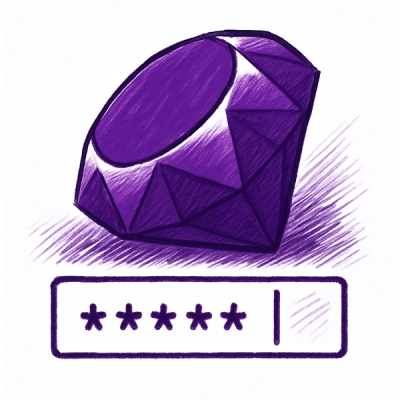
Research
/Security News
60 Malicious Ruby Gems Used in Targeted Credential Theft Campaign
A RubyGems malware campaign used 60 malicious packages posing as automation tools to steal credentials from social media and marketing tool users.
Analyze and Visualize Data, Together
If you have a question about streaming let us know or open an issue!
ben@plot.ly && alexandre@plot.ly
##Installation
npm install plotly
##Usage
var plotly = require('plotly')('username','apiKey');
var data = [{x:[], y:[], stream:{token:'yourStreamtoken', maxpoints:200}}];
var graphOptions = {fileopt : "extend", filename : "nodenodenode"};
plotly.plot(data,graphOptions,function() {
var stream = plotly.stream('yourStreamtoken', function (res) {
console.log(res);
});
someReadableStream.pipe(stream);
});
####Full REST API Documentation can be found here: https://plot.ly/api/rest/
Sign up for plotly here: https://plot.ly/ and obtain your API key and Stream Tokens in your plotly settings: https://plot.ly/settings.
#Methods
##var plotly = require('plotly')(username, apiKey)
username is a string containing your username
apiKey is a string containing your API key
var plotly = require('plotly')('username', 'apiKey');
##plotly.plot(data,graphOptions[, callback])
Plotly graphs are described declaratively with a data JSON Object and a graphOptions JSON Object.
data is an array of Objects and with each object containing data and styling information of separate graph traces. Docs: https://plot.ly/api/rest
graphOptions is an Object containing styling options like axis information and titles for your graph. Docs: https://plot.ly/api/rest
callback(err,msg) where err is an error Object, and msg is the return response Object
The msg object has the following attributes : msg.url,msg.filename,msg.message,msg.warning,msg.error
// examples/rest-example.js
var plotly = require('plotly')('username','apiKey');
var data = [{x:[0,1,2], y:[3,2,1], type: 'bar'}];
var graphOptions = {fileopt : "extend", filename : "nodenodenode"};
plotly.plot(data, graphOptions, function (err, msg) {
console.log(msg);
});
##var stream = plotly.stream(token[, callback])
token accepts a token string
callback(res) where res is a the response object with the following attributes : res.msg, res.statusCode
// examples/streaming-example.js
var plotly = require('plotly')('username','apiKey');
var initData = [{x:[], y:[], stream:{token:'token', maxpoints:200}}];
var initGraphOptions = {fileopt : "extend", filename : "nodenodenode"};
plotly.plot(initData, initGraphOptions, function (err, msg) {
if (err) return console.log(err)
console.log(msg);
var stream1 = plotly.stream('token', function (err, res) {
console.log(err, res);
clearInterval(loop); // once stream is closed, stop writing
});
var i = 0;
var loop = setInterval(function () {
var streamObject = JSON.stringify({ x : i, y : i });
stream1.write(streamObject+'\n');
i++;
}, 1000);
});
// examples/signal-stream.js
/* If you have not signed up for Plotly you can do so using https://plot.ly
* or see the example signup.js. Once you do, populate the config.json in this
* example folder!
*/
var config = require('./config.json')
, username = config['user']
, apiKey = config['apiKey']
, token = config['token']
, Plotly = require('../.')(username, apiKey)
, Signal = require('random-signal')
// build a data object - see https://plot.ly/api/rest/docs for information
var data = {
'x':[] // empty arrays since we will be streaming our data to into these arrays
, 'y':[]
, 'type':'scatter'
, 'mode':'lines+markers'
, marker: {
color: "rgba(31, 119, 180, 0.96)"
}
, line: {
color:"rgba(31, 119, 180, 0.31)"
}
, stream: {
"token": token
, "maxpoints": 100
}
}
// build your layout and file options
var graphOptions = {
"filename": "streamSimpleSensor"
, "fileopt": "overwrite"
, "layout": {
"title": "streaming mock sensor data"
}
, "world_readable": true
}
/*
* Call plotly.plot to set the file up.
* If you have included a streaming token
* you should get a "All Streams Go!" message
*/
Plotly.plot(data, graphOptions, function (err, resp) {
if (err) return console.log("ERROR", err)
console.log(resp)
var plotlystream = Plotly.stream(token, function () {})
var signalstream = Signal({tdelta: 100}) //
plotlystream.on("error", function (err) {
signalstream.destroy()
})
// Okay - stream to our plot!
signalstream.pipe(plotlystream)
})
##plotly.getFigure(fileOwner, fileId[, callback])
file_owner accepts a string of the file owner's name
fileId is an integer, representing the graph ID
callback(figure) where figure is a the JSON object of the graph figure
var plotly = require('plotly')('username','apiKey');
plotly.getFigure('fileOwner', 'fileId', function (err, figure) {
if (err) console.log(err);
console.log(figure);
});
##plotly.getImage(figure[, options, callback])
figure is a JSON object of the graph figure
options.format | jpg, png, pdf, eps, webp
options.width | width in px (default : 700)
options.height | height in px (default : 500)
callback(err, imageData)
err is an Error Object
imageStream is a Stream of base-64 encoded imageData
var plotly = require('plotly')('username','apiKey');
var fs = require('fs');
var trace1 = {
x: [1, 2, 3, 4],
y: [10, 15, 13, 17],
type: "scatter"
};
var figure = { 'data': [trace1] };
var imgOpts = {
format: 'png',
width: 1000,
height: 500
};
plotly.getImage(figure, imgOpts, function (error, imageStream) {
if (error) return console.log (error);
var fileStream = fs.createWriteStream('1.png');
imageStream.pipe(fileStream);
});
You can also use getFigure() and getImage() together!
var plotly = require('../.')('username','apiKey');
// grab the figure from an existing plot
plotly.getFigure('fileOwner', 'fileId', function (err, figure) {
if (err) return console.log(err);
var imgOpts = {
format: 'png',
width: 1000,
height: 500
};
plotly.getImage(figure, imgOpts, function (error, imageStream) {
if (error) return console.log (error);
var fileStream = fs.createWriteStream('2.png');
imageStream.pipe(fileStream);
});
});
##plotly.deletePlot(fid[, callback])
fid is a String, the id of the plot you wish you delete
callback is a function with err and plot as parameters. err, if present, is the error message returned from the request. plot is the plot that was deleted.
var plotly = require('../.')('username','apiKey');
plotly.deletePlot('88', function (err, plot) {
if (err) console.log(err)
else console.log(plot);
});
FAQs
Simple node.js wrapper for the plot.ly API
The npm package plotly receives a total of 7,740 weekly downloads. As such, plotly popularity was classified as popular.
We found that plotly demonstrated a not healthy version release cadence and project activity because the last version was released a year ago. It has 1 open source maintainer collaborating on the project.
Did you know?

Socket for GitHub automatically highlights issues in each pull request and monitors the health of all your open source dependencies. Discover the contents of your packages and block harmful activity before you install or update your dependencies.

Research
/Security News
A RubyGems malware campaign used 60 malicious packages posing as automation tools to steal credentials from social media and marketing tool users.

Security News
The CNA Scorecard ranks CVE issuers by data completeness, revealing major gaps in patch info and software identifiers across thousands of vulnerabilities.

Research
/Security News
Two npm packages masquerading as WhatsApp developer libraries include a kill switch that deletes all files if the phone number isn’t whitelisted.